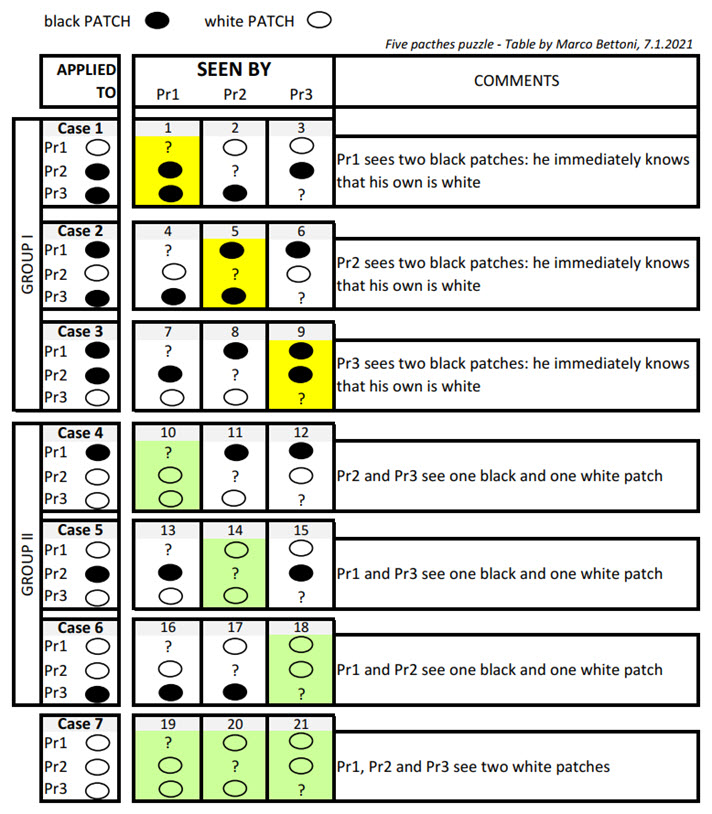
As a prisoner, what could I see and what would the other two prisoners have seen? For answering this, on a wax tablet I would have sketched a table of all cases (see Table 1). The table shows that there are 7 cases with 21 configurations, but only 3 different types:
* type A: I see 2 black patches; this type has 3
instances, hence 3/21 = 14% of probability, that I would see it.
* type B: I see 1 black and 1 white patch; this
type has 12 instances, hence 12/21 = 57% of probability, that I would see
it.
* type C: I see 2 white patches; thiy type has 6
instances, hence 6/21 = 28% of probability
Given these 3 types and probabilities, how would I prepare myself for the
challenge?
Type A (instances: 1, 5, 9):
Since there were only 2 black patches in the set, my patch can only be
white
IF I see two black patches, THEN my patch is white
INFERENCE A => quick, independent inference.
Unfortunately the probability of A is low (14%); moreover the tyrant would
probably avoid this configuration, because it is too easy for the prisoner
who receives the white patch.
Type B (12 instances):
* IF my patch would be black (instances 2, 3, 4 & 6, 7, 8), two of the
three patches would be black, THEN the prisoner with white would see two
black patches and by inference A could immediately tell, that he has
white.
* IF the prisoner with white does not react immediately AND he payed
attention THEN I can be sure that I have not black (instances 11, 12, 13
& 15, 16, 17)
INFERENCE B => delayed inference, depending on another prisoner's
reaction and state
Type C (6 instances):
* IF my patch would be black (instances 10, 14, 18), THEN the other two
prisoners would see a black and a white patch and would need to do the
delayed inference of type B (in group II)
* IF the other two prisoners don't seem to do the delayed inference of
type B THEN I could infer that my patch is white (instances 19, 20, 21).
INFERENCE C => delayed inference, depending on the two other
prisoner's reaction.
Because: with type A I can be sure that my patch is white; with type B and C, if my patch is black (42%) then one of the other two prisoners will find the right answer, so why should I wait? It would be better if I just say "white" immediately.
Marco Bettoni / 9.1.2021